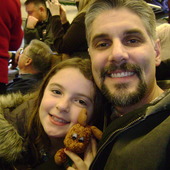Hardwood flooring's greatest enemy is water. Follow these tips on hardwood floor installation, prep and cleaning to get the most out of your beautiful new floors.
Hardwood flooring's biggest enemy is water. Water causes wood to swell. This swelling can cause warping, twisting, cupping, edge crush, etc. to occur. Sometimes the flooring will recover and sometimes it won't. The trick is to avoid introducing water to your hardwood floor.Water can occur either as a solid, a liquid, or a vapor. The liquid and vapor states are the ones that cause the most problems for wood flooring. Water in the liquid state is easy to see and control. It can be from a roof leak, a broken pipe, or a spill. However, water vapor is an entirely different story. This form of water is invisible and can originate from many sources. The damage it can cause can be widespread and considerable.

Most do not realize, but new home construction and major remodeling activities can create vast amounts of water vapor. Water vapor can be created by curing concrete, the drying process of water-saturated rough lumber, ceramic tile installation, drywall or plastering activities, painting activities, concrete floors that lack vapor barriers, crawl spaces that lack vapor barriers, high humidifier settings on furnace equipment, washing and cleaning activities, etc. High humidity levels in the air can not only add additional water vapor, but can also inhibit existing water vapor from dissipating.
The bottom line is really very simple. Do not expose hardwood flooring to excessive levels of water vapor. This is especially true if you are installing unfinished hardwood flooring.
Installation Guidelines
Quality hardwood flooring materials are milled from lumber which has been kiln dried to a specific moisture content. Many lesser quality (Chinese manufactured) hardwoods are air-dried which is NOT a uniform way to dry wood, but that is a topic for another day. It is recommended that this moisture content be maintained at that level for the best installation results. That means that you should not allow the wood flooring to gain or loose any additional moisture. Never stacked or store wood flooring materials directly on concrete flooring.
The job site where the flooring is to be installed must be dry. The interior climate conditions (temperature & humidity) should be at or very near those which will be maintained during normal occupancy. These conditions should begin at least five days prior to the delivery of the flooring material. The flooring material should be distributed into the rooms where it will be installed and allow to acclimate for four - five days. The interior climate conditions should be maintained at normal occupancy conditions from this time forward.
If hardwood flooring is to be installed directly over the home heating plant or main duct or piping trunk lines, these lines or the subflooring should be insulated to prevent low level infra red heat from drying out the wood flooring.
Rough framing lumber should be checked for moisture content prior to flooring installation. Rough lumber can absorb vast quantities of water because of being exposed to the weather during construction. Moisture readings should not exceed 12 - 14%.
Hardwood flooring must be installed on solid, approved subflooring materials. Nonveneered panel subflooring products (OSB, flakeboard, chipboard, etc.) are sometimes not recommended for use below hardwood floor installations. If in doubt about your subflooring, be sure to check with your hardwood floor supplier or installer prior to the construction of your subfloor!
Care & Maintenance of Hardwood Flooring
Never use water on wood flooring to clean it. Mopping wood floors with soaps, wax removers, 'oil soaps', etc. can easily harm wood flooring. Some cleaners can leave residues which will discolor the flooring or make refinishing extremely difficult.
Never use 'self-polishing' waxes, unless the product specifically states it is safe for hardwood floors. Many of these waxes contain water.
If you floors appear dull, always try to buff floors to revive the shine. Never apply a surface finish over prefinished factory materials.
People often ask me about applying wax to their hardwood floors. Do not wax floors that have a clear or colored finish (polyurethane / varnish) on them. The presence of wax may make recoating extremely difficult. Clear finishes can not be applied over wax. Only apply wax to floors that you know have had wax applied from the beginning. This is a very old-school type finish and is not very common today, but just be aware there are waxed floors out there.
Vacuum wood floors frequently. Keep dust and grit off of floors.
Food and beverage residue can be cleaned with a damp (fully squeezed) cloth or sponge.
If hardwood flooring is used in a kitchen, dry mop the floor after meals to pick up any water droplets. You may want to use an area rug in front of sinks and dishwashers. Aside from protecting the flooring, the area rug will make standing at the sink more comfortable.
Many people like to 'screen' their hardwood floors every few years. This process involves lightly scuffing the old finish and applying a new, single coat of finish. If this is done on a regular basis, the floor may never have to be resanded and finished. Refinishing usually has to occur if the original finish has been abused. The 'screening' process, when done by professionals, can usually be done for a fraction of the cost of refinishing. The result is a brilliant finish which looks new almost all of the time. Please give it serious consideration.


Comments(0)